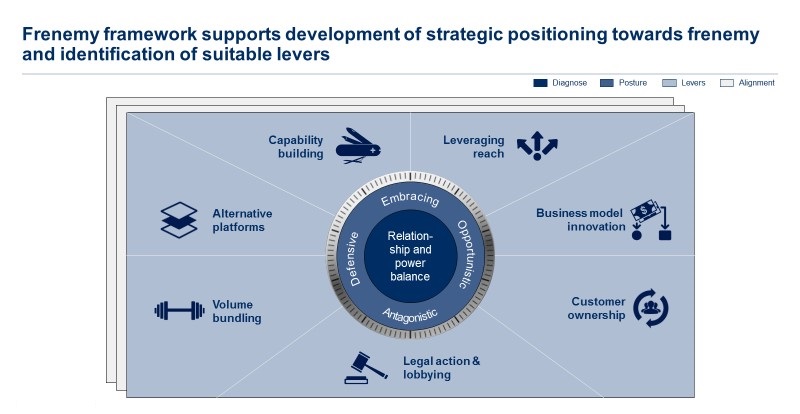
HR for Business Impact
Hays Steilberg on the dovetailing of talent management and strategy at Bertelsmann
undconsorten: There are accusations that some HR functions are detached from the actual business. At Bertelsmann, you took a different approach with our support. How did this come about?
Hays: We integrate key strategic issues into our HR work under the heading of strategic exploration. On the one hand, we want to fill major roles with our talents. On the other hand, we want to benefit from the perspectives of our talents on key issues. When we set up the talent architecture, we thought about what we do with talent - especially with the top of the talent pyramid. We want to utilise the potential of 'the best and brightest' in the Group. By entrusting our top people with our strategically important topics and issues, we utilise the potential on the one hand, while on the other hand the talents naturally have expectations in this direction.
Our Management Board in particular benefits from the fact that we create a space in which the perspectives of our top talents can be honestly formulated. Traditionally, such managers in large organisations have the difficulty that they tend to be surrounded by people who consciously or unconsciously tend to confirm the opinions and actions of the boss in their day-to-day work. We break through this 'bubble' or, as they say today, 'echo chamber' and create an opportunity for our board to learn things that previously escaped their attention.
undconsorten: Do you have a few tangible examples of the strategic results that have been achieved through the talent programmes?
Hays: I have two favourite examples. The first is the first cohort from a top management pool - that was more than three years ago. As part of a "board dialogue" lasting several months, they were tasked with thinking about what the Group's attitude towards our most important frenemies, i.e. Google, Amazon, Facebook and Plus X, should be. We naturally supported the talents with various fact packs on core features, business models and insights into the current strategic business relationships with our division - and also provided them with a "frenemy framework" for structured problem-solving on this complex topic (see graphic).

The observation or recommendation that had the most lasting effect for me and was almost the simplest was something like this: these frenemies are forcing us to change business models and the implications are so profound that there needs to be a close dialogue between the management teams across the business. Today, Thomas Rabe and our top management meet with these players twice a year to really go through the most relevant strategic topics, explain our positions and make the working relationship more equal. Of course, this also involves topics such as intellectual property, dealing with advertising space or tax practice, i.e. really relevant topics that are sometimes difficult to discuss.
The second example is the processing of relevant trends and topics initiated by a meeting of our Chairman's Council in London at the time. There, the topics of big data, data analytics and machine learning were identified as critical issues for us and discussed more intensively. This impetus resulted in various Group-wide initiatives. One example is a working group with four workstreams that work exclusively on these topics of data and tech. In addition, we have developed our MediaN programme, a rotation and development programme for young professionals that is specifically focused on talent from this market. We now have a global network and interact with universities and other networking groups.
andconsorten: We have now talked a lot about the added value for the business. What is the advantage of your talent management transformation for you and your team?
Hays: Firstly, we now have a completely different level of transparency about the relevant people and talent in the Group compared to the past. Secondly, we are now encountering an openness in the business, so that it is accepted and no longer questioned that we are also approaching employees, be it for a specific development offer or a vacancy that the home operating unit may not be aware of. Thirdly, it is also interesting for HR to work directly on strategic issues, i.e. not as mere administrators or fulfilment assistants, but to really be involved in shaping them. Because I am convinced that the strategy you formulate is only as good as the quality of its implementation. And for that you need the right people. That's what we convey in many ways in this respect.
undconsorten: Last question, what were some "aha" moments for you during this process that you would like to share?
Hays: Firstly, that you should have clear goals as to what you actually want to achieve with such measures. You don't do talent management for the sake of talent management. It is legitimate to say that it is a retention measure so that people feel that the company cares. But if it's nothing more than that, then I think at some point employees will say that it has a bad aftertaste. You should really ask yourself why I'm doing this and what I want to change with it. I think that talent management can also be used for ideas, observations and impulses that come from the operational business in order to move the company forward.
I believe that the selection of the people involved is crucial. Firstly, the relevant businesses and markets must be represented; secondly, you need people who are willing and have the ambition to change and shape things; and thirdly, they must have the necessary skills to make a meaningful contribution. We simply need to find those who have the right qualities not only to develop ideas, but also to take things forward in the organisation.
Furthermore, it is a disruptive process in which there is usually still natural and understandable resistance, at least in any complex organisation. These are sensitivities, it changes local processes, affects the respective sub-organisations and requires a great deal of communication. In retrospect, this requires a relatively long breath and consistency, but of course also a certain flexibility along the way. It helps to have a clear perspective of what you actually want to achieve with such measures, why am I doing this, what do I want to change with it and how would I measure the success of the change. You don't do talent management for talent management's sake.
Deep-dive talent management at Bertelsmann:
At Bertelsmann, the four building blocks of performance and development management, learning, talent pools and succession planning are closely interlinked. Evaluations within the Group are decoupled from rewards and are used instead to identify development opportunities, e.g. via the talent pools or other learning programmes. To date, there are a total of four pools, which build on each other and are used systematically to work on the Group's central strategic issues. In a large, decentralised Group, an important focus is on networking in order to get to know sister units or other regions. Accordingly, the pools typically start with a team-building kick-off. Alumni and other mentors as well as SiteVisits then support the "poolies" in the development of their strategic project. The individual development of the talents is promoted by a broad set of measures, which, in addition to diagnostics and feedback as well as various learning opportunities (from small nuggets to Bertelsmann University programmes closely linked to talent management), is based above all on transparent dialogue and support in realising career opportunities.




